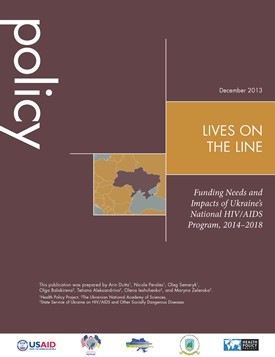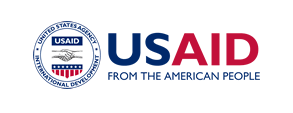The Health Policy Project ended in 2016. Work continued under Health Policy Plus (HP+) until 2022.
PUBLICATION

Author(s): Arin Dutta, Nicole Perales, Oleg Semeryk, Olga Balakireva, Tetiana Aleksandrina, Olena Ieshchenko, and Maryna Zelenska
Primary Language: English
Date: 12/31/2013
Abstract:
Once dominated by infections among people who inject drugs, the adult HIV incidence in Ukraine is increasing among other key populations and the national prevention strategy must adapt. In this context, the USAID-supported Health Policy Project (HPP) partnered with State Service of Ukraine on HIV/AIDS and Other Socially Dangerous Diseases, and the Institute for Economy and Forecasting of the National Academy of Sciences of Ukraine in July 2013 to analyze the cost and effectiveness of HIV prevention over 2014–2018. The analysis aimed to inform the National AIDS Programme (NAP) 2014–2018. HPP applied the Goals mathematical model to examine the effects of scaling up treatment, harm reduction, and other behavioral interventions on incidence, and developed an Excel-based model to estimate the implementation cost. Recent Ukraine-specific epidemiological, behavioral, demographic, and cost data were obtained from the Ministry of Health and other secondary sources. Results suggest that the NAP with universal access targets for prevention is the most cost-effective prevention strategy. This suggests additional investment in Ukraine would be rational and could save lives. Non-renewal of Global Fund support for key prevention interventions in Ukraine would substantially weaken the efficiency and effectiveness of its HIV response and requires an urgent resource mobilization strategy.
Efficiency & Effectiveness Health Financing HIV Modeling People who Inject Drugs (PWID) Report Ukraine

